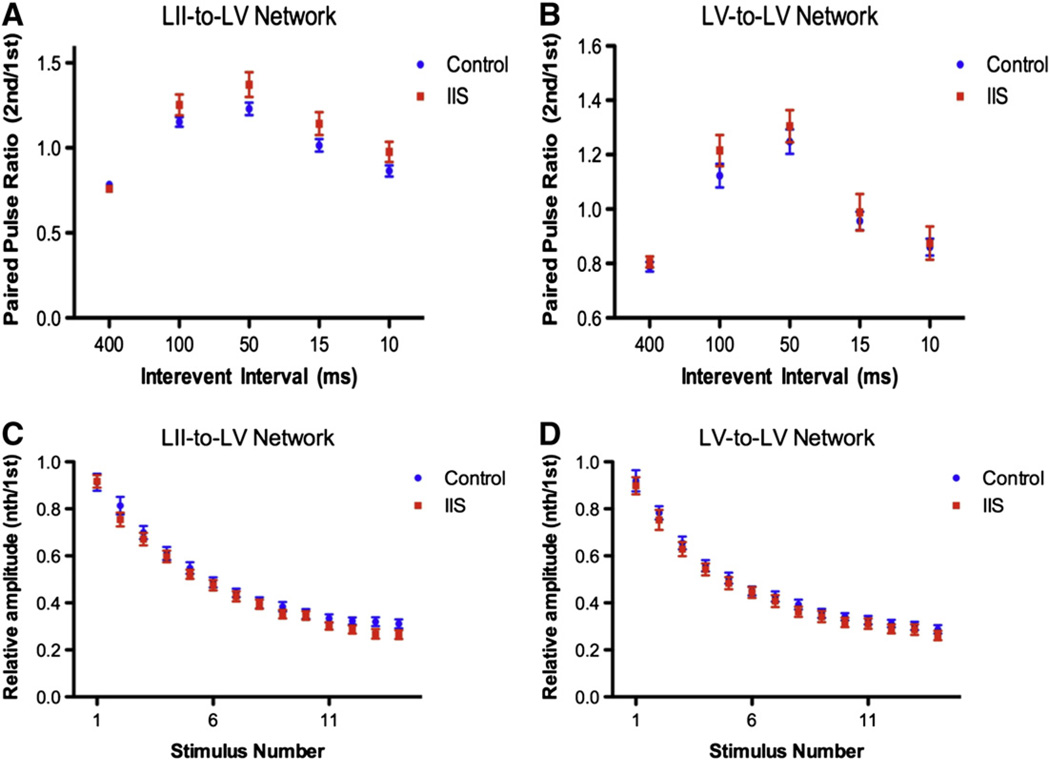Fig. 4.
Other forms of STP are unaltered after early-life IIS. At interpulse intervals ranging from 10 to 400 ms, the relative ratio of the amplitude of the first fEPSP to the second fEPSP (paired pulse facilitation) is not changed in animals with a history of early life IIS activity (red) in either LII-to-LV (A) or LV-to-LV (B) compared to littermate controls (blue). Activity-dependent plasticity after early-life IIS. Individual points represent mean values of fEPSP amplitudes normalized to the first fEPSP amplitude during train of 15 stimuli delivered at 50 Hz to LII/III (C) or LV (D) and recorded in LV at ELS (red) and control (blue) groups. No significant differences were noted in either the LII-to-LV or the LV-to-LV network. Graph values are means ± SEM: N = 4 Control, N = 4 IIS; 22–25 slices per group.

